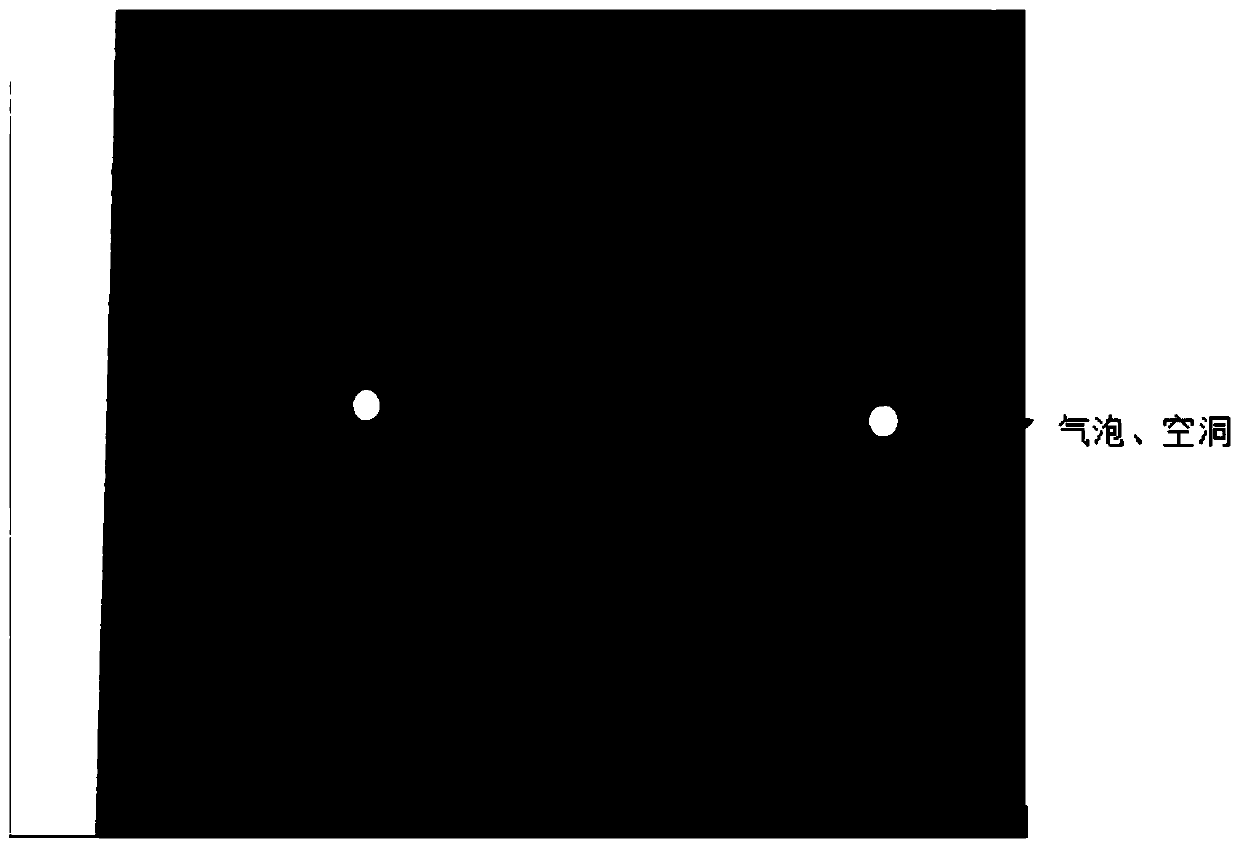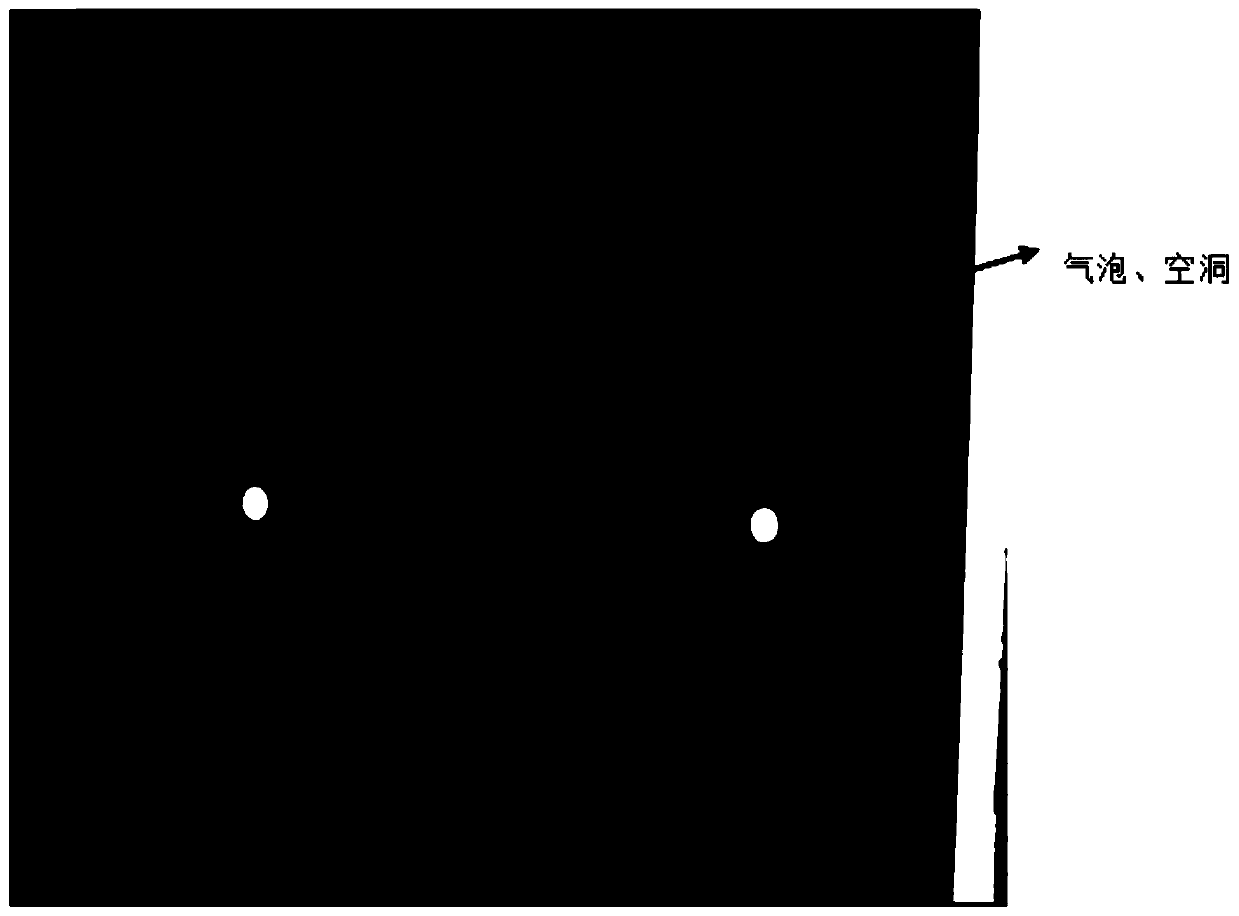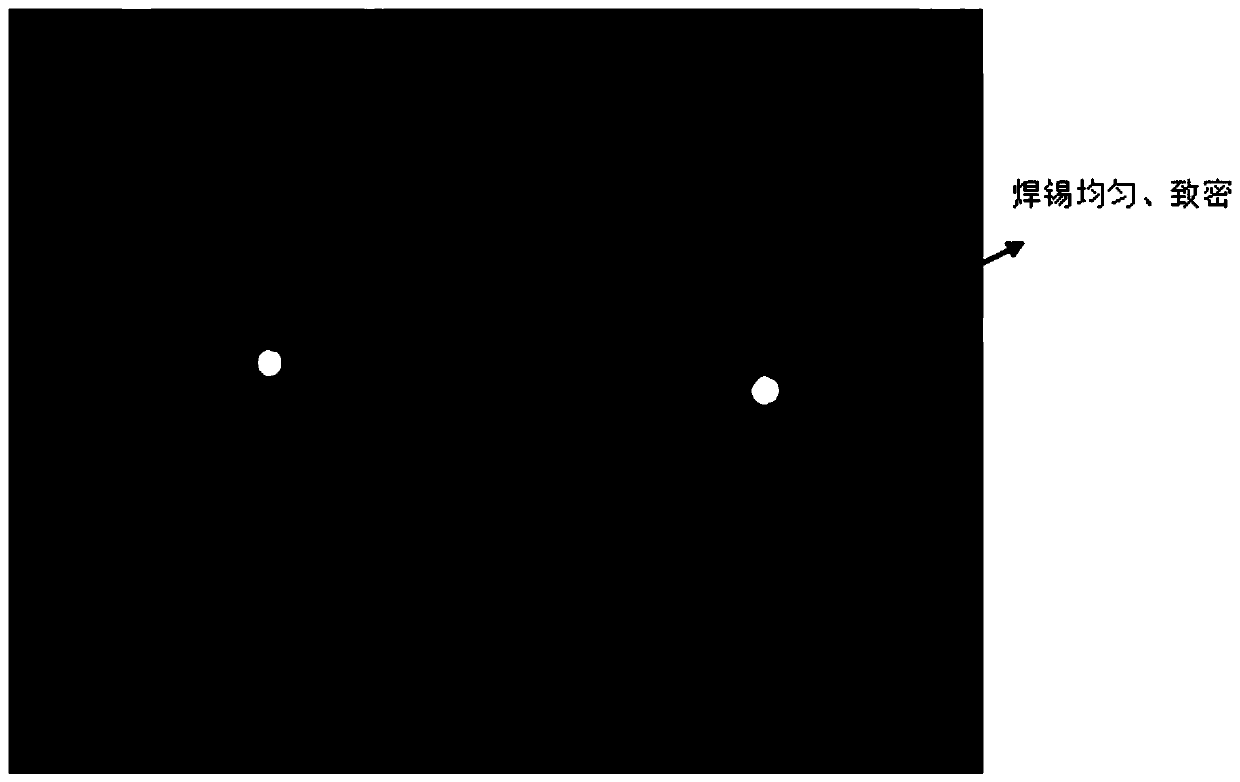Process for reducing soldering hole rate of soldered printed board by adopting polytetrafluoroethylene block
A technology of polytetrafluoroethylene and printed boards, which is applied in manufacturing tools, welding equipment, metal processing, etc., can solve the problems of reducing the soldering void rate and high soldering void rate of soldered printed boards, so as to reduce product reliability risks, The effect of low process complexity and saving time for product assembly and rework
- Summary
- Abstract
- Description
- Claims
- Application Information
AI Technical Summary
Problems solved by technology
Method used
Image
Examples
Embodiment Construction
[0018] The present invention will be further described below in conjunction with the drawings:
[0019] The process of reducing the welding void rate of welded printed boards by using PTFE blocks includes the following steps:
[0020] S1. Make a solder sheet corresponding to the printed board, put the tin sheet in the shell first, and then turn the printed board with the solder paste into the shell;
[0021] S2. Press the PTFE block corresponding to the printed board on the printed board, cover the cover on the shell and fix it with screws. At this time, the cover presses the PTFE block on the printed board. On board
[0022] S3. Heat welding. The PTFE block is heated and expanded during the heating process to apply a pressing force to the printed board. Under the action of the pressing force, the heated and melted solder is evenly distributed, thereby reducing the void ratio and improving the printed board Performance and reliability.
[0023] Preferably, the solder sheet is processe...
PUM
 Login to View More
Login to View More Abstract
Description
Claims
Application Information
 Login to View More
Login to View More - R&D
- Intellectual Property
- Life Sciences
- Materials
- Tech Scout
- Unparalleled Data Quality
- Higher Quality Content
- 60% Fewer Hallucinations
Browse by: Latest US Patents, China's latest patents, Technical Efficacy Thesaurus, Application Domain, Technology Topic, Popular Technical Reports.
© 2025 PatSnap. All rights reserved.Legal|Privacy policy|Modern Slavery Act Transparency Statement|Sitemap|About US| Contact US: help@patsnap.com



